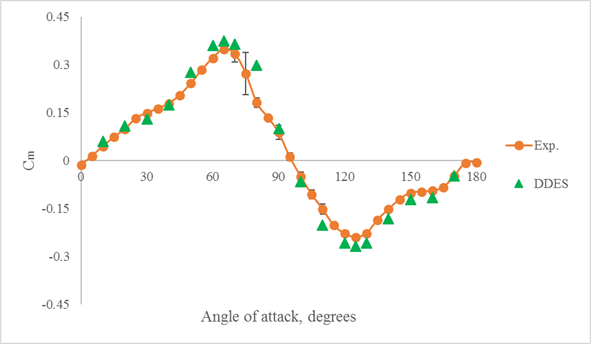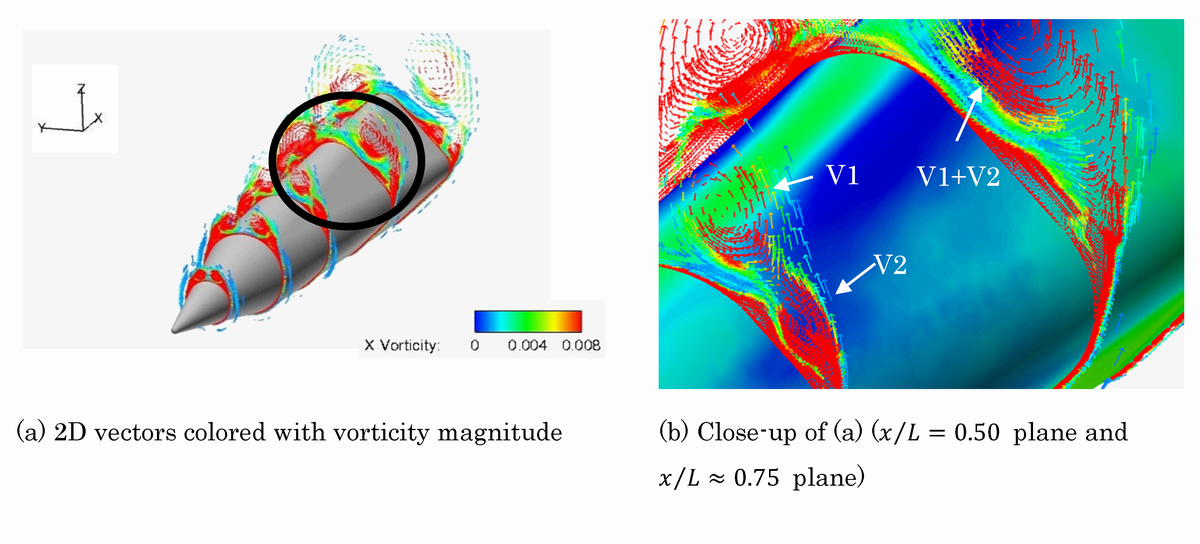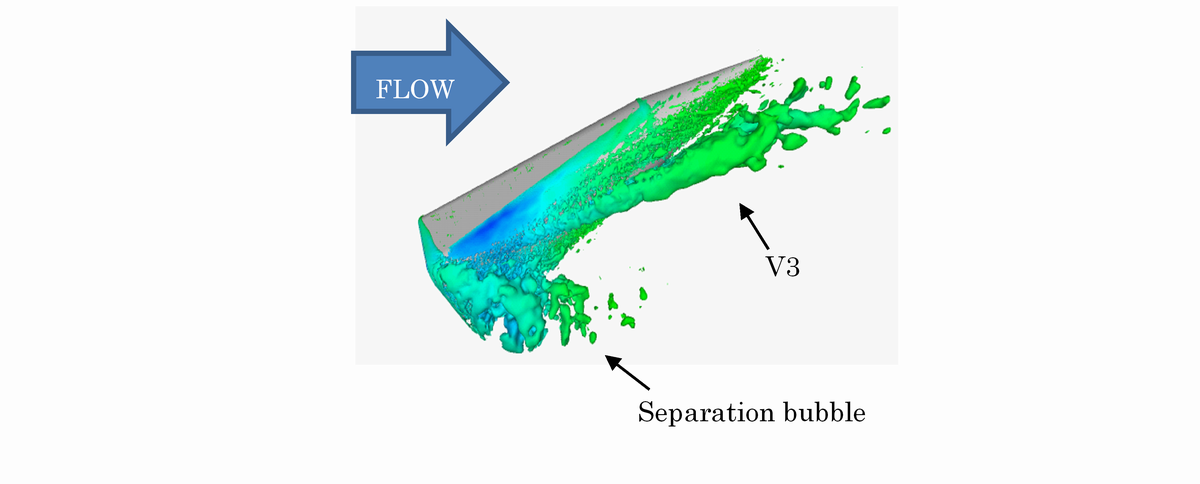Computational Study on Aerodynamic Characteristics of Slender Body Configurations
JAXA Supercomputer System Annual Report April 2016-March 2017
Report Number: R16E0046
- Responsible Representative: Keiichi Kitamura(Yokohama National University)
- Contact Information: Takuya Aogaki(aogaki-takuya-rf@ynu.jp)
- Members: Keiichi Kitamura, Takuya Aogaki, Ryusuke Yamagata
- Subject Category: Space(Rocket,Space transportation)
Abstract
We conducted numerical analysis on a slender body configuration which mimics a reusable rocket. In this study, we acquired detailed flowfields which have not been obtained from previous experiments and related them with aerodynamic characteristics. As a future work, by reference to our results, we will install aerodynamic devices and examine configurations to get better aerodynamic characteristics.
Goal
Exploring the effect of flowfields around slender body vehicles, such as reusable rockets, to its aerodynamic characteristics, and proposing aerodynamicallysuperior configurations.
Objective
We conduct numerical simulations on the present configuration and quantitatively discuss the effect of flowfields to aerodynamic characteristics. Then, we install aerodynamic devices or change the body configuration to propose aerodynamicallysuperior configurations
References and Links
N/A
Use of the Supercomputer
From earlier studies, it is known that our calculations require at least 10 million cells. In order to reduce the computational time of such large-scale calculations significantly, we used JSS2.
Necessity of the Supercomputer
Since reducing the computational time of large-scale calculations was necessary, we used JSS2.
Achievements of the Year
We conducted numerical simulations on a slender body configuration which mimicked a reusable rocket and obtained flowfields and aerodynamic coefficients. As shown in Fig. 1, the pitching moment coefficients at each angle of attack agreed well with those of experiment. We newly discovered that two types of vortices were generated less than 90 degrees, as in Fig. 2. Here, these vortices were rotating in the same direction; therefore, V2 was not a secondary vortex of V1. Figure 3 shows a visualization result more than 90 degrees, and from this figure, it was found that longitudinal vortices and separation bubble were generated on the leeward side of the body. We elucidated that these bubbles and vortices greatly affected the aerodynamic characteristics.
Publications
Persentations
1) Aogaki, T., Kitamura, K., and Nonaka, S., 'Computational Study of Aerodynamic Characteristics of Reusable Rocket at High-Angle-of-Attack,' AIAA Paper 2017-1212, 55th AIAA Aerospace Sciences Meeting (AIAA SciTech 2017), Grapevine, TX, Jan. 2017.
Computational Information
- Parallelization Methods: Process Parallelization
- Process Parallelization Methods: MPI
- Thread Parallelization Methods: n/a
- Number of Processes: 1024
- Number of Threads per Process: 1
- Number of Nodes Used: 32
- Elapsed Time per Case (Hours): 30
- Number of Cases: 50
Resources Used
Total Amount of Virtual Cost(Yen): 4,080,125
Breakdown List by Resources
| System Name | Amount of Core Time(core x hours) | Virtual Cost(Yen) |
|---|---|---|
| SORA-MA | 2,409,495.24 | 3,915,339 |
| SORA-PP | 2,354.05 | 20,098 |
| SORA-LM | 5,476.76 | 123,227 |
| SORA-TPP | 0.00 | 0 |
| File System Name | Storage assigned(GiB) | Virtual Cost(Yen) |
|---|---|---|
| /home | 9.54 | 89 |
| /data | 95.37 | 899 |
| /ltmp | 1,953.13 | 18,423 |
| Archiving System Name | Storage used(TiB) | Virtual Cost(Yen) |
|---|---|---|
| J-SPACE | 0.66 | 2,046 |
Note: Virtual Cost=amount of cost, using the unit price list of JAXA Facility Utilization program(2016)
JAXA Supercomputer System Annual Report April 2016-March 2017





